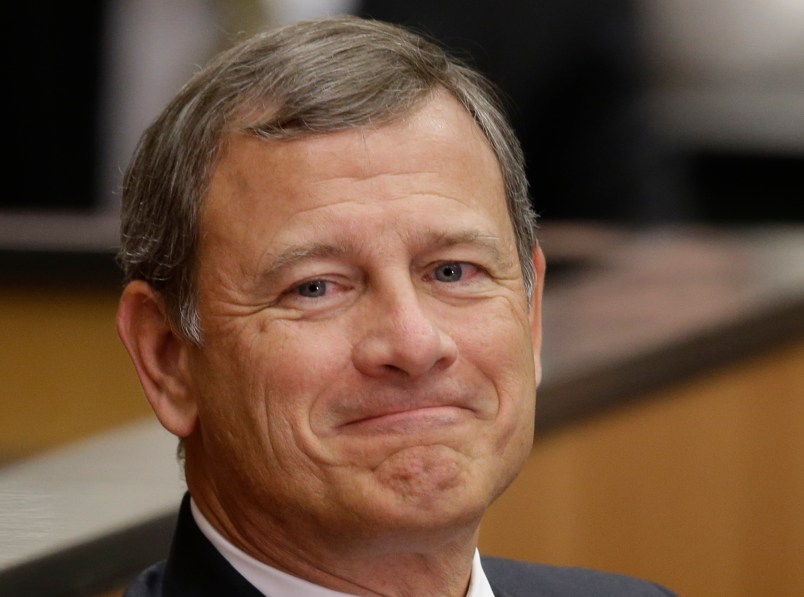Almost everyone in the voting rights community agrees that the unexpected case challenging long-held assumptions about the concept of “one person, one vote” — which is being heard by the Supreme Court next week — could have devastating consequences. But a point of contention among experts is what threat a more incremental decision poses to the already crippled Voting Rights Act.
The case is called Evenwel v. Abbott. It is coming out of Texas, where the challengers are contesting the state legislature’s senate redistricting plan. At issue is whether the use of total population to draw districts — as Texas and other states have near universally done — is unconstitutional.
The challengers suggest that some other metric — perhaps one that counts districts by citizens or by eligible voters — is preferable. They say their votes have been diluted because they live in a district that has a higher percentage of eligible voters compared to district that is roughly the same size in total population, but has a lower rate of voter eligibility — in part because of the presence of Latino noncitizens.
If the Supreme Court agrees with the challengers wholeheartedly, the case is poised to upend not just Texas’ redistricting plan but could cause chaos in other areas where districts have a relatively high number of non-eligible voters, which include not just undocumented immigrants, but children, prisoners, and in some places ex-felons. The challenge is being treated by civil rights advocates as an attempt to undermine the growing political power of left-leaning minorities, while
undermining the fundamental idea that representation should be based on the number of people a politician represents, rather than those eligible to vote for him.
“That notion has become so deeply embedded in consciousness, it’s become very hard for people to think that it’s under attack in Evenwel,” said Nina Perales, the vice president of litigation at the Mexican American Legal Defense and Educational Fund, which had sought to intervene in the case when it was at the lower court.
What’s much less clear is how significant an impact the case will have if the court issues a more limited ruling, against the challengers but explicitly allowing states to use new ways to count the members of their legislative districts. In that scenario, according to some experts, the challengers would technically lose, but it could still be a loss for voting rights, too, because of the changes it could unleash state by state.
In the current case Texas, under Republican Gov. Greg Abbott, is defending its right to use total population to draw its districts. But it is also asserting its right to use other metrics — including eligible voter population. It’s been assumed, legal experts said, that states already had the latitude to take into consideration other metrics in addition to the Census’ total population count in drawing districts since the 1966 decision Burns v. Richardson, which allowed Hawaii to leave out military populations in its redistricting.
But the argument Texas is making rang alarm bells for the Obama administration. In its own brief otherwise supporting Texas, Solicitor General Donald Verrilli discouraged the court from addressing the other metrics floated by the state in its brief, and instead simply rule on the constitutionality of total population.
“They’re doing this because they don’t want the Supreme Court, either intentionally or unintentionally, to constitutionally bless the use of citizen voting age population as a proper basis for redistricting,” said Nathaniel Persily, a Stanford Law professor who specializes in voting rights and redistricting. “That is what Texas is asking for, but it doesn’t need to.“
If Texas’ position is to be read as a hint that the state would like to draw districts based on voting-age citizens rather than population in the future that could present a new wave of obstacles in drawing majority-minority districts under the Voting Rights Act, which has already faced its fair share of legal challenges.
“That’s one of the concerns about the case: You end up with the Supreme Court saying that either would be fine,” said Michael Li, counsel for the Brennan Center’s Democracy Program, a non-partisan organization that defends voting rights. “That discretion is almost as good for the plaintiffs as a win.”
Some voting rights experts dismissed the idea that the Texas brief was a sign of trouble to come: “States have had this discretion and virtually no state has exercised it, so I don’t think there is all that much danger,” said Richard Hasen, a professor at UC-Irvine School of Law who also runs the Election Law Blog.
Likewise, Perales defended Texas’ brief, which she said was “not trying to open the door on anything that hasn’t been open.”
One reason some voting rights advocates are not concerned: the sheer practical challenge of settling on a data collection system as reliable as Census’ in determining total population. Currently, the Census does not count residents in the way that could reasonably reflect the other metrics the Evenwel challengers are proposing and the federal surveys that do are considered not nearly as accurate.
Hasen also pointed to the atypical way this case came up to the court as “reason to think that this is not going to be the blockbuster case” some fear.
Still, the man pushing the current case is enough to alarm voting right advocates. Ed Blum — the man behind public legal advocacy organization Project on Fair Representation — has successfully urged the court to undermine the Voting Rights Act in other cases, and is in the midst of a separate challenge to affirmative action policies.
In an interview this earlier year with TPM, Blum said his goal in his legal advocacy is to remove race as a consideration in government decision-making and acknowledged that crippling government’s ability to draw minority-majority districts is a consequence of that effort.
His efforts have a way of securing a seemingly less impactful decision in one case that sets the stage for a much more consequential ruling down the road.
“That’s how the Roberts Court has worked,” Persily said. “They tend to stick their toe in at the shallow edge and take the full plunge later.”











If the SCOTUS allows states to draw districts based on the numbers of eligible voters, then would that mean that the same metric should be used to determine the size of each state’s congressional delegation?
Bye, bye, personhood.
Representatives and direct Taxes shall be apportioned among the several States which may be included within this Union, according to their respective Numbers, which shall be determined by adding to the whole Number of free Persons, including those bound to Service for a Term of Years, and excluding Indians not taxed, three fifths of all other Persons.
Ok constitutional originalists, let’s see your bullshit flow onto bullshit mountain.
The entire American “experiment” in democracy depends on allowing all voters to have their say. But Republicans are restricting voter rights in many states. They want the “integrity” of our voter rights without any proof that this integrity has been compromised. The Supreme Court should put an end to this unwarranted nonsense. Regrettably, Republicans want to go back where only white male property holders voters have the right to vote. It is the only they stay in power. I hope the Supreme Court will put an end to this.
In addition to the apparently-clear language of the constitution (and no, the native-american exception doesn’t get you anywhere unless you make treaties with undocumented immigrant groups and exempt them from taxes), the challengers’ idea opens up an endless warehouse full of worm cans. Even if you could count adults eligible to vote (and doing that requires statistical adjustments to census data that should make the “conservatives” who scream about sampling hand their heads in shame), those numbers change or time in ways that total population doesn’t. So, for example, everyone between the ages of 8 and 18 would be partially disenfranchised until the next redistricting, all the felons who were in a position to petition for restoration of rights… Redistrictings could be held up indefinitely while litigation dragged on about the procedures to use.
All of which would be fine for people who don’t actually care about governing.